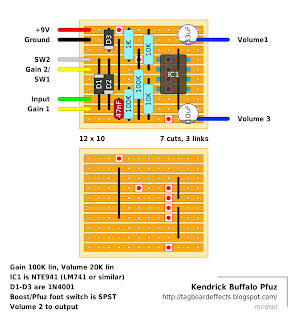The Echo Bender is a mix of multi FX pedal and noise maker.
It can process external signals like guitars, keyboards, mics and drum machines or it can create complex sounds on its own.
It can function in several different stand alone modes:
-Warm analog sounding echo.
-Highly adjustable distortion.
-Ring mod style feedback.
-Complex noise generator.
-These modes can be used on their own or it can all be mixed together to achieve effects ranging from melodic and dreamy to chaotic and screamy.
The noise generating capabilities are especially interesting. The echo rate range has been set much lower than the standard echo pedal. When the rate is turned WAY down, the sound breaks up into blipping squeals and screeches. Combine this with distortion and feedback tones and a reverse decay setting and you’ve got a lot of variety and tonal complexity.
Video demos and additional information on the Casper Electronics site.





































